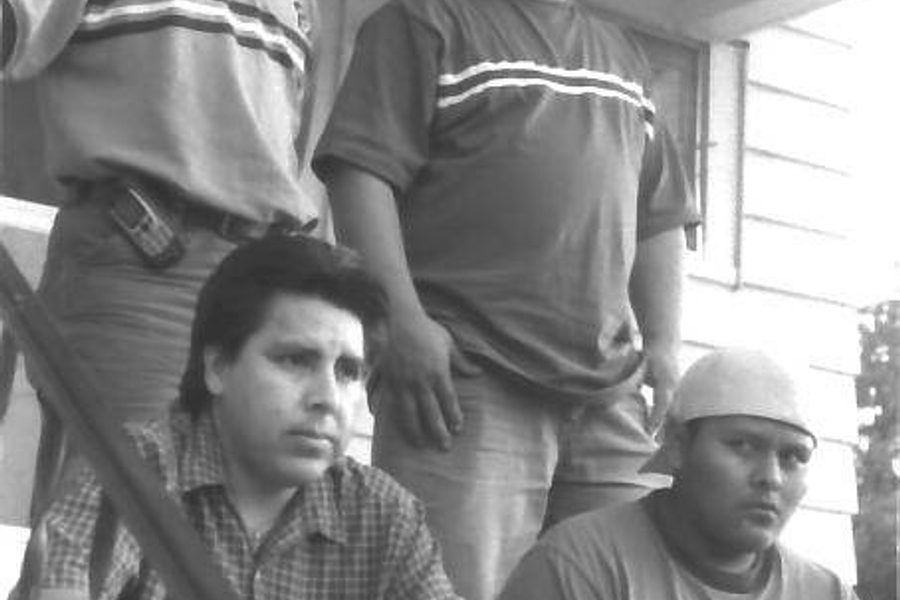
Forty years ago today, the Occupational Safety and Health Administration (OSHA) was founded to set and enforce standards to protect workers from injury and disease caused by their jobs. To mark the founding of OSHA and Americans’ continuing struggles for safe working conditions, Workers Memorial Day has been observed each year on April 28 since 1989.
While OSHA’s creation was a watershed moment, work-related death, illness and injury has continued to be rampant across America. I’m still haunted by the story I covered of an immigrant worker, likely undocumented, who died a painful and gruesome death in 2007 after being horribly burned in an accident at an Archer Daniels Midland plant in Illinois.
And less spectacular but also tragic are the myriad slow-burn injuries workers suffer over the years from repetitive and taxing work on assembly lines, in agricultural fields, in warehouses, offices, hospitals and taxi cabs. Clerical workers suffer debilitating carpal tunnel syndrome, making it hard to even brush their teeth. Farm workers are wracked by pain in their backs, hands and countless other body parts, while also being exposed to toxic pesticides.
Truck and cab drivers report high rates of chronic pain in their backs and legs, and have trouble eating well or exercising because of their long sedentary hours. Low-paid workers in nursing homes and medical institutions lift and move patients without proper training or equipment. Warehouse workers get rashes and coughs from the dust coming out of storage containers, not to mention the musculoskeletal effects of the highly physical work. And of course. miners below ground and in strip mines develop silicosis and black lung disease and are at constant risk of deadly accidents.
The AFL-CIO’s 2010 “Death on the Job” report says:
Eight years of neglect and inaction by the Bush administration seriously eroded safety and health protections. Standards were repealed, withdrawn or blocked. Major hazards were not addressed. The job safety budget was cut. Voluntary compliance replaced strong enforcement. In the absence of strong government oversight and enforcement, many employers cut back their workplace safety and health efforts.
The federal Bureau of Labor Statistics reports that death and injury rates have been falling in recent years. In October 2010 the agency reported:
Nonfatal workplace injuries and illnesses among private industry employers declined in 2009 to a rate of 3.6 cases per 100 equivalent full-time workers — down from 3.9 cases in 2008…Similarly, the number of nonfatal occupational injuries and illnesses reported in 2009 declined to 3.3 million cases, compared to 3.7 million cases in 2008. The total recordable case injury and illness incidence rate among private industry employers has declined significantly each year since 2003.
But union leaders argue that such shifts can also be related to how employers report or avoid reporting injuries…and not all injuries that are reported are logged as recordable incidents by OSHA. The AFL-CIO 2010 report says:
More than 4.6 million work-related injuries were reported (in 2008), but this number understates the problem. The true toll of job injuries is two to three times greater — about 9 to 14 million job injuries each year.
Meanwhile, injury and death rates have remained disproportionately high for Latino immigrant workers, who tend to do the most dangerous and grueling jobs. If they are undocumented, they are particularly susceptible to exploitation by employers who know workers are more likely to be unaware of their labor rights or afraid to make waves by complaining.
Author Gabriel Thompson recently described his experience working cutting lettuce in Yuma in the course of writing his book Working in the Shadows. He said he was struck by just how much his hands hurt from the work, and how having hands in pain affects every aspect of your life — you are unable to play with your kids, you move throughout the world gingerly for fear of knocking your swollen hands on something. This wasn’t a “reportable injury,” it was just the nature of the work that thousands of mostly immigrant workers do every day.
While workers’ compensation is a legal right for people injured and sickened at work, countless workers never receive it. They don’t understand their rights to apply; their employers contest whether their injuries are work-related or debilitating; and contractors or freelancers – doing construction, bike messengering, writing, data entry and many other jobs — who develop chronic injuries but don’t work for one steady employer find it nearly impossible to apply for workers comp.
Work-related injury and illness is especially chilling given the shift in the labor market away from long-term, steady employment with lifelong health benefits and pensions. Now when workers suffer acute or chronic injuries that require ongoing healthcare or make it harder for them to work in the future, they have less certainty than ever that they will be able to afford and access the health care they need.
While in decades past an injured worker might at least be able to rely on their long-time employer to give them light duty and keep them on the payroll, temporary and independent contract workers have no such assurance.
One thing I’m always struck by in the course of reporting on labor is that as hard, monotonous, tiring, unfairly compensated and otherwise problematic as so many jobs can be, people do for the most part take pride and even joy in their work. Especially when great improvements could be made by simple extra investment by employers in more staff, lighter workloads and better protections…and by more oversight and enforcement by government regulators…it should not be this way.
Kari Lydersen is a Chicago-based journalist, author and assistant professor at Northwestern University, where she leads the investigative specialization at the Medill School of Journalism, Media, Integrated Marketing Communications. Her books include Mayor 1%: Rahm Emanuel and the Rise of Chicago’s 99%.








